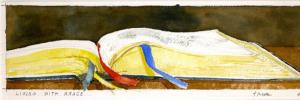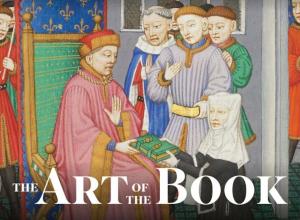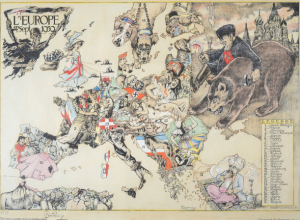J. Paul Getty Museum Acknowledges Armenian Apostolic Church’s Ownership of Eight Illuminated Pages

LOS ANGELES (September 21, 2015)—The J. Paul Getty Museum and the Western Prelacy of the Armenian Apostolic Church of America today announced that they have resolved their dispute over the ownership of eight illustrated pages—called Canon Tables—from the Zeyt’un Gospels, by T’oros Roslin (Armenian, active 1256 - 1268), which have been in the Getty’s collection since 1994.
“This is a momentous occasion for the Armenian people, coming at a historic time, on the 100th anniversary of the Armenian Genocide. I want to thank the Getty for joining in a solution that recognizes the historical suffering of the Armenian people and that will also allow this Armenian treasure to remain in the museum which has cared for it and made it available to the Armenian and larger community in Los Angeles. We are pleased that both sides arrived at an amicable solution,” said Lee Crawford Boyd, the Brownstein Hyatt Farber Schreck shareholder representing the Western Prelacy of the Armenian Apostolic Church of America. “The sacred Canon Tables are now being recognized as having belonged to the Armenian Church. Together with the Church and the Armenian people, we are thrilled with this outcome.”
Under the settlement, the Getty acknowledges the Armenian Apostolic Church’s ownership of the eight 13th Century manuscript pages. “That the pages were saved from destruction and conserved in a museum all these years means that these irreplaceable representations of Armenia’s rich artistic heritage have been and will be preserved for future generations,” said Timothy Potts, director of the J. Paul Getty Museum.
The Zeyt'un Gospels, made in the scriptorium at Hromklay for Catholicos Constantine I in 1256, are the earliest signed work of T'oros Roslin, the most accomplished illuminator and scribe in Armenia in the 1200s.
Canon tables provide a concordance of related passages that describe the same events in more than one of the four Gospels. By the early Middle Ages, the columns of numbers were usually assembled within painted architectural structures. Though Roslin used this traditional format in all of his pages, he varied the ornamental designs and naturalistic elements, imbuing each page with individuality and vitality. In medieval Armenia, religious books such as this one were believed to serve as heavenly intercessors for those involved in the books' creation, patronage, or care. Gospel books are among the most splendid of Armenian manuscripts.
The agreement acknowledges the Church’s historical ownership of the Canon Tables. Separately, in recognition of the Getty’s decades-long stewardship of the Canon Tables and its deep understanding and appreciation of Armenian art, the Church will donate the pages to the Getty Museum in order to ensure their preservation and widespread exhibition.
“We are happy that our ownership of the pages has been recognized and the Canon Tables are now returned to the patrimony of the Armenian people,” said Archbishop Moushegh Mardirossian, Prelate of the Western Prelacy of the Armenian Apostolic Church of America. “These precious leaves are dear to Armenians everywhere, and we are pleased to have achieved a resolution which continues to keep them safe under the careful stewardship of the Getty, where they will be made available in perpetuity to the Armenian community, to scholars and to an appreciative public.”
“This is a creative and mutually beneficial solution that recognizes the importance of preserving such works for devotion, study, and enjoyment, while also acknowledging the tragic circumstances under which the pages were removed from the Zeyt’un Gospels,” said Potts. “We are honored by the Church’s decision to donate the Canon Tables to the Getty Museum, allowing us to continue to care for the leaves and to make them available for research, study and exhibition. This is a gift to all the people of Los Angeles and the millions of visitors who come to our museum every year.”
Southern California is home to the largest Armenian community in the world outside of Armenia.
Image: Canon Table Page, 1256. T’oros Roslin (Armenian, active 1256-68). The J. Paul Getty Museum, Los Angeles, Ms. 59, fol. 8.
















